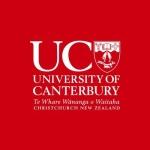UC and museum making Christchurch's heritage available to the world: UC lecture
Canterbury earthquakes changed more than the physical landscape of Christchurch; they also changed its heritage landscape.
Before the 2010 and 2011 earthquakes, the University of Canterbury (UC) and Canterbury Museum had planned a joint exhibition pairing items from their collections.
In the wake of the closure of many of the museum’s galleries, the two institutions have sought new and innovative ways to celebrate their shared history.
Chris Jones from the University of Canterbury and Sarah Murray from the museum will tomorrow night present a public lecture at UC on some of the solutions, focusing on a newly co-curated exhibition: Canterbury Tales - www.canterbury.ac.nz/canterburytales.
While the earthquakes deprived the Christchurch public of an installation in the museum, they created the opportunity to explore the potential of UC’s Ilam campus to host exhibitions and resulted in the creation of a new digital presentation making the city’s heritage available to the world.
``This is a project where we have created a positive from the negative that is the earthquake,’’ Dr Jones said today.
``This is the first time that UC and the Canterbury Museum have cooperated in creating a joint exhibition displayed at the Ilam campus and the first time the museum has launched any sort of digital exhibition.
``None of us would have gone down this route without the earthquakes. The expertise available at UC has played a key role in bringing the project to fruition, and led to New Zealand’s first `born digital’ exhibition developed jointly by a tertiary institution and a major museum.”
From the New Zealand public’s perspective, it is a way of introducing Canterbury and Christchurch’s heritage to those who are not actually in Christchurch.
Dr Jones said it had given both UC and the museum an opportunity to think about the way they would work together in the future and it led to the development of new and exciting ideas in both teaching and research.
The digital archive was not only providing permanence but it had allowed both organisations to reach a much wider audience than they had originally intended.
